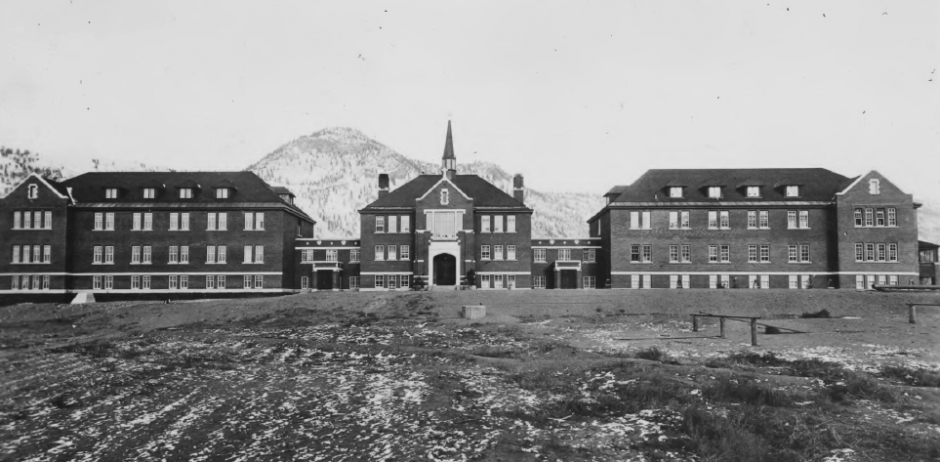June 14, 2020

The UBC Indian Residential School History and Dialogue Centre (IRSHDC) is saddened to hear about the recent discovery of 215 children buried at the former Kamloops Indian Residential School (IRS). Today, we lift up the communities affected in their time of pain, mourn with the grieving families and honour the lives of over 4,100 children across Canada who never came home.
Tk’emlúps te Secwépemc Kukpi7 (Chief) Rosanne Casimir says the 215 burials discovered were not part of the original 50 deaths recorded at the Kamloops IRS. While this news is deeply saddening, there have been similar findings emerging from communities across Canada such as with the Muskowekwan, Assiniboine and Penelakut. The Centre expresses gratitude for the work taken on by Indigenous communities of recovering unidentified remains of children who were in government custody under the residential school system as it is crucial to furthering healing and reconciliation. It is also in direct alignment with the Truth and Reconciliation’s Calls to Action 73 and 75 which speak to the need to identify unmarked graves and remains of children who attended residential schools and return them that they may be laid to rest on their territory with their people.
We acknowledge the difficult work that must be completed to identify students, and honour those who do the work in a culturally grounded way. Thank you to the Tk’emlúps te Secwépemc Language and Cultural Department, and the other Knowledge Keepers who contributed to the discovery of these burials – we share in your grief. This work is only just beginning, and hope that in the journey to come it will bring comfort and closure for all the families, Survivors and communities impacted.
The Centre calls upon the government, and other heritage organizations to increase funding to grants such as the Pathways to Healing grant, to enable other communities to do this work. Sites such as these need to be marked, acknowledged, and remembered so that the legacy of residential schools is never forgotten.
“This is a very difficult discovery and traumatizing for all Survivors and Indigenous communities, and British Columbians, who are learning today that residential schools were the site of burials and large graves,” says Centre Academic Director, Mary Ellen Turpel-Lafond, Aki-Kwe. “This finding validates and confirms what Survivors and those in the community have said for years. We want to find out what happened to them. This is part of the legacy of residential schools.”
More on Kamloops IRS and the children that never returned
- Kamloops Indian Residential School was the largest school in the residential school system, with more than 500 students registered in the 1950s.
- The Kamloops IRS is located on the traditional territory of the Secwépemc people.
- Hundreds of Secwépemc and other Indigenous children attended the Kamloops IRS, from as far away as Mount Currie and Lillooet.
- Illnesses such as measles, meningitis, pneumonia and influenza are noted in the early records of the school.
- In 1910, the principal noted that there was not an adequate amount of food or clothing for the students.
- In 1969 the school was turned into a day school before its closure in 1978.
- Inconsistent records and inaccurately recorded information – such as recording Anglicized versions of names – make it difficult to easily track students.
- There are more than 1,200 students in the Memorial register whose deaths are recorded but their names are unknown.
- There were 18 residential schools in BC alone, in various states – some demolished, others turned into sites of remembrance – leaving room for the discovery of unknown graveyards and unmarked burials
Resources
- A National Residential School Crisis Line has been set up to provide support to former students. This 24-Hour Crisis Line can be accessed at: 1-866-925-4419.
- Official press release from Tk’emlúps te Secwépemc Kukpi7 (Chief) Rosanne Casimir (May 27, 2021)
- “Kamloops History: The dark and difficult legacy of the Kamloops Indian Residential School.” Kamloops This Week. October 2020.
- Kamloops Indian Residential School. IRSHDC Records and collections.
- Agnes, Jack. Behind closed doors: stories from the Kamloops Indian Residential School.
- Project of Heart. Illuminating the hidden history of Indian Residential Schools in BC.
- Canada’s residential schools: Missing children and unmarked burials. The final report of the Truth and Reconciliation Commission of Canada (2015).